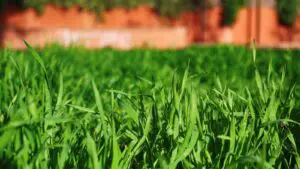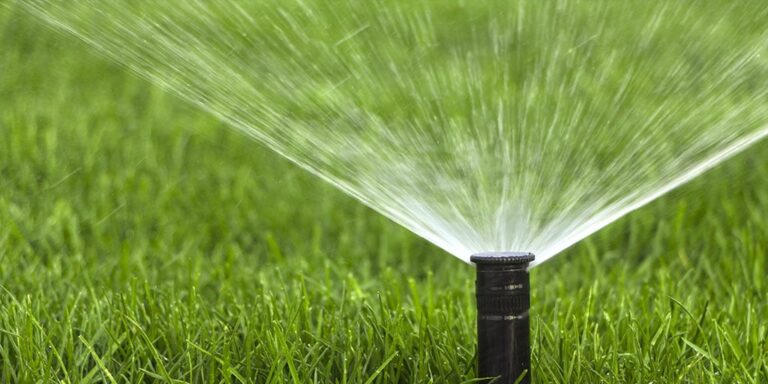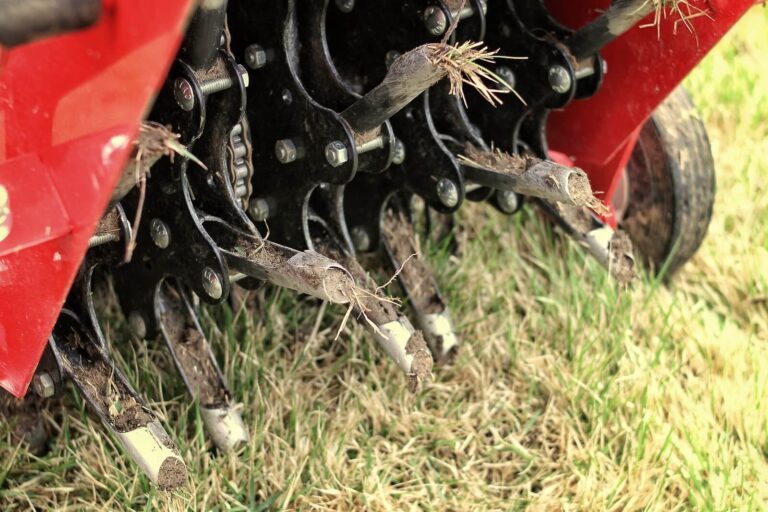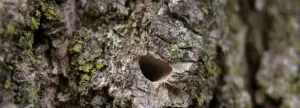How to Choose the Best Types of Grass for Colorado Springs Homes
If you’ve struggled to keep a lush, green lawn in Colorado Springs, you’re not alone. The unique climate—cold and arid—and soil found in Colorado Springs can make it difficult for certain types of grass to thrive. Choosing the right turf type is critical if you want a healthy and attractive lawn.
Understanding Climate and Soil in Colorado Springs
The combination of warm summers with extended stretches of sunshine and cold, snowy winters has earned Colorado Springs the official climate designation of “alpine desert.” While this unique climate makes the area a wonderful place to live, it can pose a bit of a challenge when trying to grow a gorgeous green lawn.
While it may not happen frequently, the temperatures can dramatically shift from balmy, warm weather to freezing cold and snow in as little as 24 hours.
As if that wasn’t enough, the heavy clay soil found in many areas of Colorado Springs can make it even more difficult for lawns to thrive (and gardens to grow).
Clay soils can limit root growth because of poor aeration. Wind and low humidity can lead to soil water loss, but adding more water to the ground can reduce the amount of oxygen that gets to the roots of grasses and plants (oxygen starvation). Finally, Colorado Springs soil has an 8.5 pH (a measure of acidity or alkalinity), which is higher than many plants and grasses can tolerate.
Before you throw in your garden trowel and lawnmower, take heart. The long stretches of sunshine, crisp cool nights, and warm summer days mean you can have a healthy lawn in Colorado Springs. You just have to know which types of grasses flourish in these conditions.
The Best Types of Lawn Grass for Colorado Springs
Turf grass generally comes in two categories: cool-season and warm-season grass.
Warm-season grasses are well adapted to hot, dry weather and grow in the summer months. Because they thrive in hot, dry climates, warm-season grasses are drought tolerant. Warm-season grasses tend to brown in the cooler months and can be more prone to diseases in late fall through early spring.
Warm-season grass types include:
- Bermuda Grass
- Zoysia Grass
- Buffalo Grass
Cool-season grasses are well adapted to cooler climates. Cool-season grass grows quickly in the spring and fall and continues until the soil freezes. Drought and high heat can cause cool-season grasses to brown in warmer temperatures. Cool-season grasses can be more prone to disease infestations during the summer.
Cool-season grass types include:
- Kentucky Bluegrass
- Perennial Ryegrass
- Fine Fescues
Colorado Springs has cool and warm weather conditions and is considered a “transition zone.” The transition zone runs across the center of the United States between the cooler Northern states and warmer Southern states. It can be difficult to get year-round green in the transition zone; warm-season grasses don’t do well in freezing temperatures, while cool-season grasses will go dormant and brown in hot, arid summers.
Grass types that do particularly well in Colorado Springs include Kentucky bluegrass, tall fescue, and buffalo grass.
Kentucky Bluegrass
Kentucky bluegrass is soft to the touch and exceptionally cold-hardy. Kentucky bluegrass is slow to germinate and can take months to establish, but then spreads quickly. Kentucky bluegrass looks and feels great but needs more water and fertilizer during summer and can be disease-prone if not regularly watered.
- Soft underfoot
- Cold tolerant
- Mix with fescues to be hardier and more disease-resistant
- Seeding rate: 3 to 4 pounds/1,000 square feet
Tall Fescue
Tall fescue is a hardy, low-maintenance grass that’s great for high-traffic areas. Tall fescue grass grows well in full sun to partial shade, has a high heat/ drought tolerance, and does well in moist clay soils.
- Highly pest resistant
- Full sun to partial shade
- Mixes well with Kentucky bluegrass
- Seeding rate: 7 pounds/1,000 square feet
Buffalo Grass
Buffalo grass is a warm-season grass that can be low-maintenance once it’s established. While it needs plenty of water to be established, well-established buffalo grass can survive without irrigation. However, non-irrigated buffalo grass will go dormant in the summer, which can make it prone to weed invasion.
- Full sun to partial shade
- Disease resistant
- Needs little water once established
- Seeding rate: 3 to 5 pounds/1,000 square feet
Choosing a Turf Type for Your Colorado Springs Lawn
Understanding which types of lawns grow best in Colorado Springs is a great place to start, but your property will have its own unique factors that determine the best turf type for you.
Before deciding on the best grass your yard, consider some of the following:
Sun vs. Shade
Is your yard fully or partially shaded, or does it get direct sun all day? Warmer-season grasses will love your sun-drenched yard, while cooler-season grasses may be more suitable for a full-shade yard. Consider the amount of sun vs. shade your yard gets when selecting your grass type.
Water
While grasses like Kentucky bluegrass and buffalo grass initially require the same amount of water to establish, their watering requirements differ once they’ve matured. If you’re looking for drought-tolerant grass that requires little to no irrigation, you may prefer low-water grass like buffalo grass. On the other hand, if the soft foot feel of Kentucky bluegrass is important to you, you’ll need to be prepared for the water needs of that particular type.
Lifestyle
Warm-season grasses tend to go dormant in the winter while cool-season grasses brown in the summer. Which time of year will you want to enjoy your lawn? If your family embraces the warm summer months in Colorado Springs and spends considerable time outdoors for backyard BBQs and get-togethers, warm-season grass may be a better fit for your individual lifestyle.
How to Establish and Maintain Your Lawn Grass
Once you’ve selected the best type of grass for your yard, understanding how to establish and maintain your lawn correctly can help improve its health and appearance.
Tips For Establishing A Lawn In Colorado Springs
- The best time to seed cool-season grasses (bluegrass and tall fescue) is mid-August to mid-September. Cool-season grasses can also be seeded in the spring as soon as temperatures warm.
- The best time to seed warm-season grasses (buffalograss) is April through July.
- Avoid: seeding after the first fall frost and after July.
- Apply starter fertilizer at the rate recommended on the label.
- Irrigate the area to maintain consistently moist–but not saturated– soil. Check moisture levels in the underlying soil to prevent excessive irrigation.
- Grass will germinate and grow more vigorously in aerification holes or slits made by the power rake.
- Begin mowing the lawn when it has grown to about 2 1/2 inches.
- Keep traffic, including children and pets, off the lawn as much as possible until you mow it a few times and the new grass matures.
- Only spray herbicides to control visible weeds on the new lawn once you’ve mowed five to six times.
- Refrain from over-fertilizing to make the new lawn grow faster.
- Always read and follow the label instructions for fertilizer and herbicide products. Remember: the label is law!
Watering Tips
- Let grass species, health, soil conditions, and weather dictate watering practices.
- Shady lawns and areas protected from the wind require less water during the growing season than more exposed turf.
- Healthy turf (fertilized, mowed) uses water more efficiently.
- Each time you water, apply enough water to moisten as much of the root zone as possible.
- Grass growing in sandy soil must be watered more often than grass growing in clay or loam soils.
- During extended dry periods (late fall to spring), you may need to water every four to six weeks if the ground is thawed.
- The optimal time of day to water is late evening and early morning (between 10 p.m. and midnight or 8 and 9 a.m.)
Mowing Tips
- Mowing height and frequency are key to a healthy lawn.
- The preferred mowing height for all Colorado-friendly grass species is 2.5 to 3 inches.
- Mow the lawn at the same height all year.
- Mow the turf frequently enough to remove no more than 1/3 of the grass height at any single time. (Example: mow the grass when it is 3 inches tal to obtain a 2-inch length).
- Let grass clippings fall back onto the lawn, if possible. Grass clippings decompose quickly and provide a source of recycled nutrients and organic “food” for the lawn.
- Regularly check mowing equipment for sharpness and adjustment.
Enjoy a Beautiful Colorado Springs Lawn
The unique climate and location of Colorado Springs can pose a challenge for growing and maintaining a healthy, attractive lawn. But it’s not impossible to get a luscious green lawn you’ll love. Understanding that the alpine desert climate brings both hot, dry conditions as well as freezing temperatures and which types of grasses grow best in the transition zone will help you choose the best lawn grass. Remembering to factor in your yard’s unique properties, your personal preferences, and your family’s lifestyle will also help you make the right choice.
Selecting the right grass type is the first part of your lawn journey, but taking the time to establish and maintain your grass properly is just as important.
If you feel overwhelmed by the task of selecting, seeding, establishing, or maintaining a healthy lawn in Colorado Springs, don’t dismay. At J. Rick Lawn and Tree Care, we help Colorado Springs residents get the advice and help they need to grow great grass. Contact us with questions or for a consultation.
Our lawn care experts are happy to help you get the lawn of your dreams.








